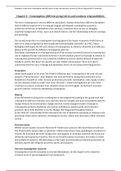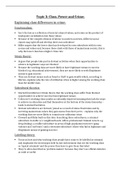Samenvatting
Chapter 2 - Summary of the book Consumption and lifestyles a short introduction
- Instelling
- Wageningen University (WUR)
Summary of chapter 2 the book Consumption and lifestyles a short introduction, written by Dieter Bögenhold and Farah Naz. This is literature for the course lifestyles and consumption at Wageningen University.
[Meer zien]






